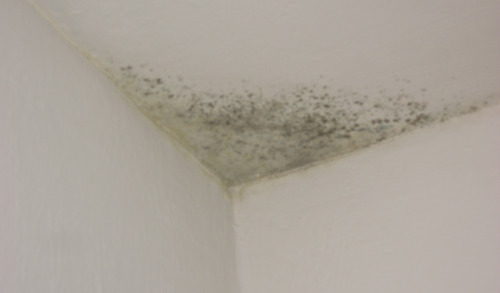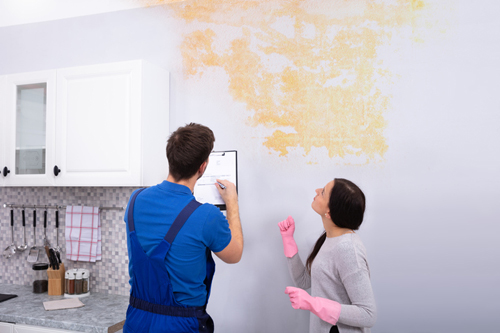Water Stains on Wall Surfaces: Inspecting and Repairing Strategies
Water Stains on Wall Surfaces: Inspecting and Repairing Strategies
Blog Article
Listed here below you can locate a lot of sensible ideas concerning Water Stains on Walls.

Water discolorations on walls are not positive to the eyes. Sometimes it appears practically unpreventable to experience water stains on walls in houses.
Home owners living in humid regions frequently deal with the anxiety of water discolorations on walls. With all-round and also precise info on the causes of water spots and prompt repair service processes, you will always be a step ahead of such events.
3 Typical Causes of Water Stains on Wall Surfaces
As opposed to popular belief, water spots on walls do not always come from poor building products. There are several reasons for water spots on wall surfaces. These include:
Moist
When warm wet air meets with dry cool air, it triggers water droplets to form on the wall surfaces of buildings. When there is heavy steam from food preparation or showers, this occurs in washrooms and kitchen areas. The water beads can discolor the surrounding walls in these parts of your home and also spread to other areas.
Wet or condensation influences the roof covering as well as wall surfaces of buildings. When the wall surface is damp, it develops an appropriate environment for the development of fungi as well as microbes.
Poor Drain
This will protect against water from permeating right into the wall surfaces. This web links to extreme dampness that you observe on the wall surfaces of your structure.
The leading reason of damp wall surfaces, in this instance, can be a bad drain system. It can additionally be due to inadequate administration of sewer pipelines that go through the structure.
Pipe Leaks
A lot of residences have a network of water pipelines within the wall surfaces. It constantly raises the feasibility of such pipelines, as there is little oxygen within the walls.
A downside to this is that water leakage affects the walls of the building as well as creates prevalent damages. A telltale sign of malfunctioning pipelines is the look of a water tarnish on the wall.
Pro Suggestion
A houseplant in your home additionally raises its humidity. So, if your home is already damp, you might intend to introduce houseplants with marginal transpiration. An example of ideal houseplants is succulents.
Water Stains on Wall Surface: Fixing Tips
When dealing with water discolorations, house owners would generally want a fast solution. Yet, they would soon realize this is disadvantageous as the water spots persist. Below are a few handy suggestions that will certainly guide you in the repair of water discolorations on wall surfaces:
Conclusion
Although no person wishes to have water spots on walls in their home, it can occur to the best people. This article provides you utilize, as you now recognize exactly how to handle this mishap if it does take place.
It is always best to hire specialist solutions to assist take care of the problems in your home.
In some cases it seems nearly unavoidable to experience water stains on wall surfaces in residences.
Contrary to preferred idea, water stains on wall surfaces do not always stem from inadequate structure materials. There are several causes of water stains on walls. The water droplets can stain the surrounding walls in these parts of your home and spread to various other areas.
Right here are a few helpful suggestions that will certainly assist you in the repair of water discolorations on wall surfaces:
CHECKING FOR WATER DAMAGE
Water damage can be costly, and it may begin before you even notice the first signs of trouble. Water damage can cause mold and mildew in your walls and floors, which can create an abundance of health concerns for your family. It can also lead to costly repairs of various appliances and general home fixtures. To avoid the pricey consequences of water damage, here are Warner Service’s top 5 places you should check:
The walls – The easiest place to spot the beginnings of water damage is on the walls and ceilings of your home. If water damage is present, there will most likely be water stains, especially around the windows and doorframes, and/or cracks in the drywall. If a stain looks unusual (discolored to brown, black or gray, raised texture), has a swollen appearance or is soft to the touch, contact a professional immediately. The pipes – To avoid water damage, consistently check the pipes in your kitchen (especially the dishwasher and ice maker), bathrooms, laundry room (specifically washing machines) and basement for corrosion, leaks and water stains. Pay special attention to where the pipes connect in your home and the location of caulking around the bathroom fixtures, including toilets, sinks, showers and tubs. Missing or loose caulking and grout could be signs of leaking water. This seepage can also quickly cause mold and rust, so double check your water heater and tank for wet spots on the floor. The floor – Water damage is very easy to spot on the floor. Look for any warping or buckling of the material, especially in the basement. If your home has wood flooring, look for bright white or dark stains. If your home has carpeting, keep it dry and clean. A damp carpet that smells of mold could cause water damage and health problems. To avoid this, consider installing floor pans under your appliances to help prevent damages from small, slow and undetected leaks. The basement and attic – If your basement or attic smells odd check for mold and mildew around the area, especially the valley where the roof meets. While you are inspecting those areas, check for wall cracks, floor stains, rust and dampness in the insulation. If you live in a colder and/or rainier climate, perform routine checks for water damage from melting snow or ice and rain. The exterior – Check the roof for damaged flashing and missing, cracked or curled shingles. There should also be no standing water anywhere outside your home. This could be caused by puddles, leaky rain gutters or hoses, poor drainage, or short gutter spouts. Invest in a sump pump system or water flow monitoring system, and perform routine maintenance on these outdoor appliances to avoid indoor water damage.

We were shown that article on How to Find and Repair Water Leaking in the Wall from a good friend on a different web page. If you appreciated our blog post please be sure to share it. Thanks for your time. Kindly check up our site back soon.
Stay calm, contact! Report this page